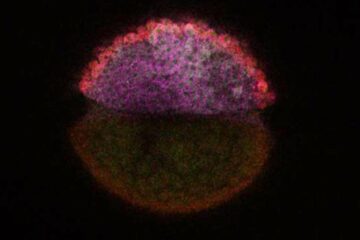2013 Nicholas Kurti European Science Prize for Dr. Lapo Bogani (1. Physikalisches Institut)

The award is one of the most prestigious honors available to young scientists, and is sponsored by Oxford Instruments, to commemorate Prof. Nicholas Kurti, who was the first to reach Microkelvin temperatures.
Lapo Bogani is the group leader of the Nanomagnetics group at the University of Stuttgart and comes from a strongly multidisciplinary background, working in a field of research that mixes chemistry and physics. His work concentrates on the study of molecular magnetic materials with quantum effects, their control using external sources (e.g. electrons or photons) and their integration in nanoscopic devices.
Previous winners include one of the discoverers of graphene (Kostantin Novoselov, later Nobel prize winner), one of the creators of circuit quantum electrodynamics (Andreas Wallraff, ETH Zürich), the leader of LNS at the Paul Scherrer Institut (Christian Rüegg), pioneers in quantum computation using molecules (John Morton) and quantum dots (Lieven Vandersypen and Ronald Hanson, TU Delft), and two leading scientists in nanoelectronics (Silvano De Franceschi , CEA Grenoble and Mathias Kläui, Professor at Mainz University).
Prof. George Pickett, chairman of the committee of senior scientists who assess the nominations, commented: “While the 2013 Nicholas Kurti Prize was characterised by a very strong field of candidates, the panel was pleased to choose Lapo Bogani as this year’s winner. Bogani has coupled nanoscience with magnetism to make ground-breaking advances in the field of nanomagnetic systems, and especially in molecular spintronics making use of single-molecule magnets. The work may lead to the use of controllable magnetic devices with single-molecule sensitivity.”
Media Contact
More Information:
http://www.uni-stuttgart.de/All latest news from the category: Awards Funding
Newest articles

Attosecond core-level spectroscopy reveals real-time molecular dynamics
Chemical reactions are complex mechanisms. Many different dynamical processes are involved, affecting both the electrons and the nucleus of the present atoms. Very often the strongly coupled electron and nuclear…

Columbia researchers “unzip” 2D materials with lasers
The new technique can modify the nanostructure of bulk and 2D crystals without a cleanroom or expensive etching equipment. In a new paper published on May 1 in the journal…

Decoding development: mRNA’s role in embryo formation
A new study at Hebrew University reveals insights into mRNA regulation during embryonic development. The study combines single-cell RNA-Seq and metabolic labeling in zebrafish embryos, distinguishing between newly-transcribed and pre-existing…





















